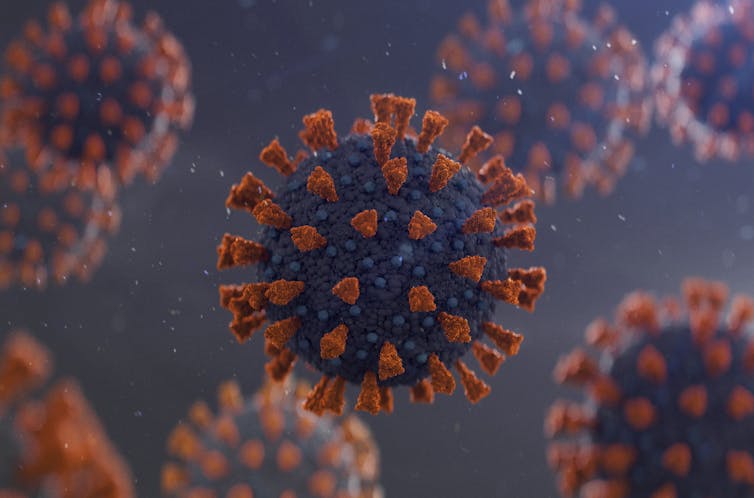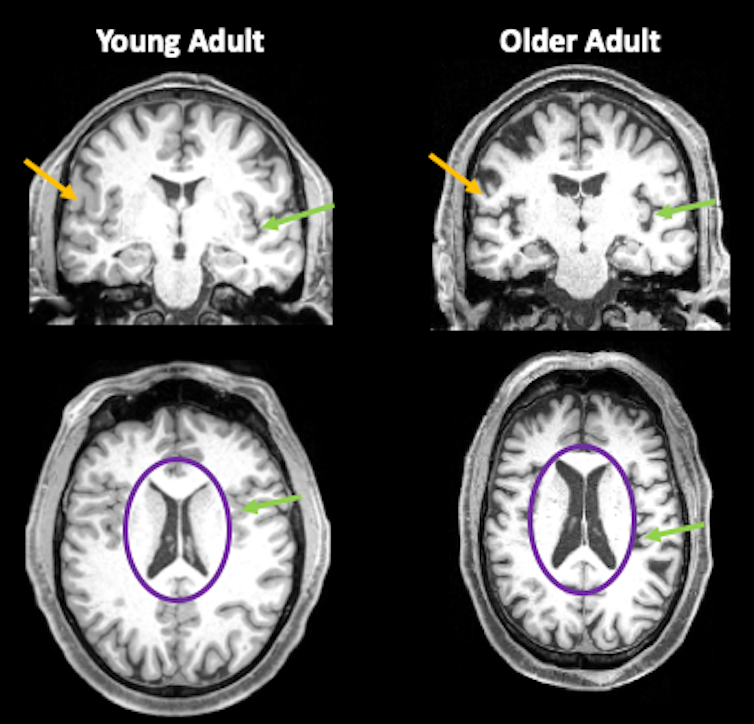
Experts in autocracies have pointed out that it is, unfortunately, easy to slip into normalizing the tyrant, hence it is important to hang on to outrage. These incidents which seem to call for the efforts of the Greek Furies (Erinyes) to come and deal with them will, I hope, help with that. As a reminder, though no one really knows how many there were supposed to be, the three names we have are Alecto, Megaera, and Tisiphone. These roughly translate as “unceasing,” “grudging,” and “vengeful destruction.”
It’s extremely unclear what the lasting effects of CoViD are or could be. We’ve heard ancedotes of damage to the heart, the circulation, the lungs, even the endothelium. We’ve see an embalmer take us through the cadavers of CoViD victims and show us (figuratively, thank God) blood clots “the size of pancakes,” which, though it applies to dead people, cannot be encouraging for the survivors. Now we see a suggestion that there may be lasting effects to the brain (not unhears of – at least some strains of flu have been known to leave behind them depressions severe enough to lead to suicide – which was useful only to mystery writers looking for red herrings. Sparkling Cyanide. Agatha Christie.)
I subnit that, particularly since so much of the damage of the pandemic has been exacerbated by misconceptions residing in peoples’ brains, this is a possibiliy which badly needs to be studied. I realize that so many medical professionals have been pulled to the fron line in this battle, there may well be a shortage of researchers right now, and those who are active with research are parobably also swamped. But I do think this should become and be a priority.
================================================================
Preliminary research finds that even mild cases of COVID-19 leave a mark on the brain – but it’s not yet clear how long it lasts

Yuichiro Chino via Getty Images
Jessica Bernard, Texas A&M University
With more than 18 months of the pandemic in the rearview mirror, researchers have been steadily gathering new and important insights into the effects of COVID-19 on the body and brain. These findings are raising concerns about the long-term impacts that the coronavirus might have on biological processes such as aging.
As a cognitive neuroscientist, my past research has focused on understanding how normal brain changes related to aging affect people’s ability to think and move – particularly in middle age and beyond. But as more evidence came in showing that COVID-19 could affect the body and brain for months or longer following infection, my research team became interested in exploring how it might also impact the natural process of aging.
Peering in at the brain’s response to COVID-19
In August 2021, a preliminary but large-scale study investigating brain changes in people who had experienced COVID-19 drew a great deal of attention within the neuroscience community.
In that study, researchers relied on an existing database called the UK Biobank, which contains brain imaging data from over 45,000 people in the U.K. going back to 2014. This means – crucially – that there was baseline data and brain imaging of all of those people from before the pandemic.
The research team analyzed the brain imaging data and then brought back those who had been diagnosed with COVID-19 for additional brain scans. They compared people who had experienced COVID-19 to participants who had not, carefully matching the groups based on age, sex, baseline test date and study location, as well as common risk factors for disease, such as health variables and socioeconomic status.
The team found marked differences in gray matter – which is made up of the cell bodies of neurons that process information in the brain – between those who had been infected with COVID-19 and those who had not. Specifically, the thickness of the gray matter tissue in brain regions known as the frontal and temporal lobes was reduced in the COVID-19 group, differing from the typical patterns seen in the group that hadn’t experienced COVID-19.
In the general population, it is normal to see some change in gray matter volume or thickness over time as people age, but the changes were larger than normal in those who had been infected with COVID-19.
Interestingly, when the researchers separated the individuals who had severe enough illness to require hospitalization, the results were the same as for those who had experienced milder COVID-19. That is, people who had been infected with COVID-19 showed a loss of brain volume even when the disease was not severe enough to require hospitalization.
Finally, researchers also investigated changes in performance on cognitive tasks and found that those who had contracted COVID-19 were slower in processing information, relative to those who had not.
While we have to be careful interpreting these findings as they await formal peer review, the large sample, pre- and post-illness data in the same people and careful matching with people who had not had COVID-19 have made this preliminary work particularly valuable.
What do these changes in brain volume mean?
Early on in the pandemic, one of the most common reports from those infected with COVID-19 was the loss of sense of taste and smell.

Dima Berlin via Getty Images
Strikingly, the brain regions that the U.K. researchers found to be impacted by COVID-19 are all linked to the olfactory bulb, a structure near the front of the brain that passes signals about smells from the nose to other brain regions. The olfactory bulb has connections to regions of the temporal lobe. We often talk about the temporal lobe in the context of aging and Alzheimer’s disease because it is where the hippocampus is located. The hippocampus is likely to play a key role in aging, given its involvement in memory and cognitive processes.
The sense of smell is also important to Alzheimer’s research, as some data has suggested that those at risk for the disease have a reduced sense of smell. While it is far too early to draw any conclusions about the long-term impacts of these COVID-related changes, investigating possible connections between COVID-19-related brain changes and memory is of great interest – particularly given the regions implicated and their importance in memory and Alzheimer’s disease.
Looking ahead
These new findings bring about important yet unanswered questions: What do these brain changes following COVID-19 mean for the process and pace of aging? And, over time does the brain recover to some extent from viral infection?
These are active and open areas of research, some of which we are beginning to do in my own laboratory in conjunction with our ongoing work investigating brain aging.

Jessica Bernard, CC BY-ND
Our lab’s work demonstrates that as people age, the brain thinks and processes information differently. In addition, we’ve observed changes over time in how peoples’ bodies move and how people learn new motor skills. Several decades of work have demonstrated that older adults have a harder time processing and manipulating information – such as updating a mental grocery list – but they typically maintain their knowledge of facts and vocabulary. With respect to motor skills, we know that older adults still learn, but they do so more slowly then young adults.
When it comes to brain structure, we typically see a decrease in the size of the brain in adults over age 65. This decrease is not just localized to one area. Differences can be seen across many regions of the brain. There is also typically an increase in cerebrospinal fluid that fills space due to the loss of brain tissue. In addition, white matter, the insulation on axons – long cables that carry electrical impulses between nerve cells – is also less intact in older adults.
As life expectancy has increased in the past decades, more individuals are reaching older age. While the goal is for all to live long and healthy lives, even in the best-case scenario where one ages without disease or disability, older adulthood brings on changes in how we think and move.
Learning how all of these puzzle pieces fit together will help us unravel the mysteries of aging so that we can help improve quality of life and function for aging individuals. And now, in the context of COVID-19, it will help us understand the degree to which the brain may recover after illness as well.
[Get the best of The Conversation, every weekend. Sign up for our weekly newsletter.]![]()
Jessica Bernard, Associate Professor, Texas A&M University
This article is republished from The Conversation under a Creative Commons license. Read the original article.
================================================================
Alecto, Megaera, and Tisiphone, I hope someone will correct me if I am wrong, but I believe the frontal and temporal lobes of the brain are both pretty important to rational thought processes. With climate change and credile threats to the very existence of democracy looning over us, the last thing we need is more people less able to think rationally. At the very least, rigorous peer review of the study cited here would be a good start.
The Furies and I will be back.
7 Responses to “Everyday Erinyes #286”
Sorry, the comment form is closed at this time.

Thanks Joanne–extra helpful since someone I know was recently hospitalized and excess CBF was among the reasons given for that need. This creates some solid framework. I recall strokes being among the later events of early last year’s cases usually attributed to the blood clots, yet strokes also impact the brain. Thus I wonder whether they looked at that group separate for added information.
…and yet the “pro-life” in slogan alone movement still is under-vacced and under-masked and undercaring about others….
So true!
Oh,yeah! Several houses near me had both “pro-life” & tRUMPence” yard signs last fall! After he was here for a Nuremberg-style rally at the county fairgrounds,spreading shiite.SMH. The county voted for himself 72% and now has barely 50% vaxxed,even w/extended hours at health dept.,evening vaxxing at schools,etc. There were 300 cases at local middle school not long after classes began,school bus routes cancelled bc NO drivers. I’m thinking about these kids later health situation;thanks for posting this,JD. Get’em Furies!LOL!
Wow a real eye opener, Joanne.
We hear about all the complications people experience with this deadly virus, but nothing like your excellent article points out.
These facts are scary, yet so many still refuse to get vaccinated. It’s insane.
I wish there was a easy way to knock some sense into them so we can get some sort of control over this deadly virus.
Thanks Joanne
OMG! Will this mean that unvaccinated Trumpkins who survive a mild bout of the Delta variant will be even more stupid than they already are?
That is exactly what occurred to me – hence my remark about the last thing we need.